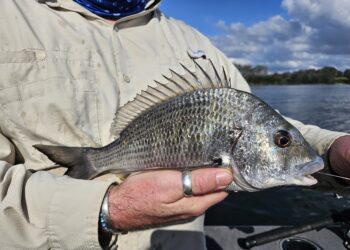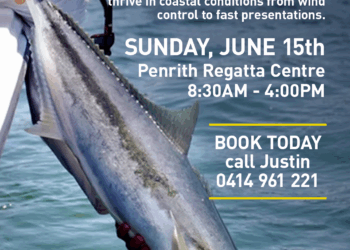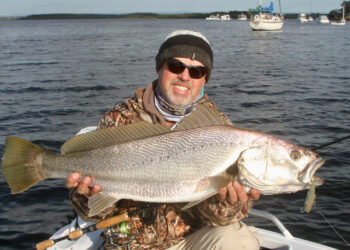The Fishing School
Chasing fish on the fly is often seen as difficult or exclusive – but it isn’t! Here are a few tips to make your fly-fishing exploits easier.
IN a general interest sportfishing magazine that caters to a broad angling market, sometimes more specialised areas of the fishing game can be left behind. Fly-fishing tends to fall into that category. We certainly cover fly-fishing in Fisho but obviously not as much as a specialised fly-fishing title would. This month’s Fishing School is aimed at the beginner to intermediate fly fisher. But even experienced fly anglers will find the following tips and hints interesting and useful.
Leader
It’s amazing how many anglers have trouble attaching a leader to the end of a fly line. The most accepted connection, especially among trout devotees, is the Nail Knot. This provides a secure and extremely low profile knot. The trouble is that it can be a little tricky to tie. You can buy several versions of a nail knot tool and these can be really good but even still it can be a difficult knot to tie well. To counter this, many fly line manufacturers create a small loop in the end of the fly line. This allows the angler to tie a loop in the leader and join the two together with a loop-to-loop join. If your fly line doesn’t have this loop built in you can buy braided loops. These slip onto the end of the fly line and are secured with a small piece of tubing and often a dab of glue. Braided loops can be quite effective but a bit bulky for the delicate presentations required in trout fishing. As an effective compromise, you can strip a few centimeters of the plastic coating off the fly line to leave you with the “string” like inner core. This is the strongest part of the fly line. You can then tie a loop in the string and tie your leaders onto that. This also provides a very slim connection.
Once you get more serious about your fly-fishing and your target species get larger, stronger and faster, you’ll need to significantly upgrade your connections. The simplest way I’ve found to attach leaders to fly lines is to tie a “whip finish” loop into the end of the fly line. This is done by folding the end of the fly line over and forming a small loop. Then, by using some nylon thread, such as rod binding or fly tying thread, you tightly bind the two sections of fly line together. Once bound, seal the bind with flexible waterproof glue like Aquaseal or Tarzan’s Grip. You can then attach leaders on with a loop-to-loop knot.
Night action
Fly-fishing at night can be a nightmare. Other than trying to cast in the dark, many anglers are perpetually frustrated by stripping the leader knot through the rod tip. This often requires you to put the rod down and pull the knot back through by hand. More than a couple of rods have been broken this way. An easy way to overcome this is to tie a small “stopper knot” using waxed dental floss onto your fly line about four metres from the end of the fly line. The waxed floss will bind together and not unravel. You can also seal it with a small amount of Aquaseal just to be safe. This way, when you feel the knot when stripping your fly line in, you’ll know that there’s about one metre of fly line off the rod tip (assuming you’re using a fly rod of around three metres in length). This tells you to pick up and start re-casting.
Slippy leaders
Another frustration is when you’re feeding the leader through the guides only to have the leader slip from your grip as you near the tip, sliding all the way back to the reel. An easy way to overcome this is to fold the fly line over about a foot from the end and feed this loop of fly line through your guides. This way if it slips out of your grip the fly line will expand enough that it won’t go through the guides.
Waxed ferrules
The ferrules or joins on a multi-piece fly rod are subject to enormous amounts of pressure during casting. This pressure can cause them to gradually work loose and come off, which can be spectacular when you’re tight to a good fish! The tip section can quite easily get damaged when this happens. Rubbing a cold wax candle over the male section of the ferrule will greatly reduce the chances of it working loose but still make it easy to separate when required.
Easy casting
Most fly rods have a fly holder just above the grip. The trouble is when you attach your fly there and remove it to start casting you often don’t have enough fly line out to generate enough energy to get distance quickly. Try hooking the fly to one of the top three guides then run the fly line and leader back down the rod and loop it over the reel. When you need to cast, slide the loop off the reel and tap the rod above the grip a few times. This causes the fly to bounce out of the guide. This will leave you with as much as two metres of fly line to commence casting with.


















